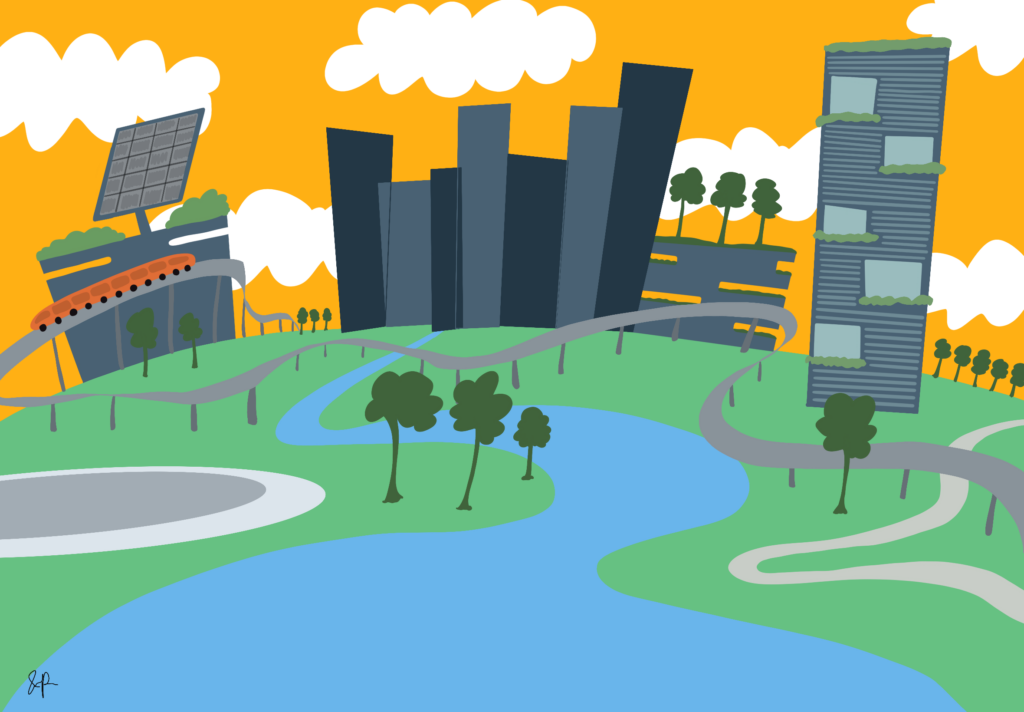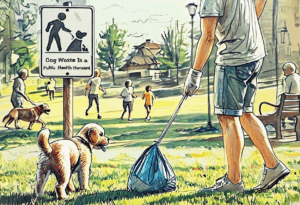
Urban centers are often associated with pollution, habitat destruction, and a lack of biodiversity. However, some cities have embraced environmentally conscious planning to restore ecological balance and promote harmony between urban development and nature. Chicago and Singapore are compelling examples of how cities can integrate sustainability and biodiversity protection into their design and development.
Chicago: Revitalized through Restoration
Chicago’s development was closely tied to its waterways, essential for trade, drinking water, and sewage disposal. However, rapid industrialization in the 19th and early 20th centuries led to significant pollution, particularly in the Chicago River. Factories and military activities made the downtown unappealing, with dirty and smelly water being a deterrent for residents and visitors alike. Daniel Burnham’s 1909 Plan of Chicago sought to impose order on the city’s chaotic growth with sterile, geometric infrastructure. However, the plan’s focus on urban efficiency exacerbated ecological imbalances. The extreme pollution and declining quality of life spurred movements like the City Beautiful Movement, which advocated for the integration of natural beauty into metropolitan spaces. By the mid-20th century, Chicago began enacting laws and launching projects to restore its environment.
Chicago has since made strides in balancing urban life with ecological restoration. Notable projects include Northerly Island’s transformation from a bustling airport into a park with hills, lagoons, and native plant species that promote biodiversity and recreational use. Millennium Park, built over train tracks, includes sustainable design elements and serves as a vibrant community space. The Chicago Riverwalk has focused on restoring the river’s ecology while creating recreational and educational opportunities. These projects signify a shift in urban planning from dominating nature to harmonizing with it instead. By reimagining its infrastructure, Chicago has reclaimed its identity as a livable and environmentally friendly city.
Singapore: A City in Nature
Singapore, a densely populated city-state, has faced unique challenges due to its limited land area. The government’s response has been to adopt a comprehensive master plan emphasizing sustainability and biodiversity. Transitioning from a “Garden City” to a “City in a Garden” and now a “City in Nature,” Singapore’s planning philosophy integrates green spaces into every facet of city life. A hallmark of Singapore’s approach is its regulation requiring developers to replace 100% of a building’s site footprint with greenery. This policy has led to the proliferation of vertical gardens, green roofs, and urban forests. These initiatives not only enhance biodiversity but also improve air quality and mitigate the urban heat island effect.
Singapore’s dedication to ecological balance is evident in its extensive network of parks and nature reserves. Urban areas are carefully planned to include wildlife corridors, ensuring that animals and plants can thrive despite urbanization. Rainwater harvesting and vertical greenery have become standard building features, reducing reliance on external water sources while integrating nature into the urban infrastructure. The government’s centralized planning and resource allocation have been instrumental in transforming Singapore from a city with slums to one of the greenest metropolitans in Asia. This intentional integration of nature into urban spaces serves as a model for sustainable city planning.
Conclusion
Chicago and Singapore demonstrate that cities can overcome environmental degradation through innovative design and policy. Chicago’s transformation highlights the importance of grassroots movements and reclaiming polluted spaces, while Singapore showcases the power of centralized planning and forward-thinking regulations. Both cities illustrate that with dedication and creativity, urban centers can become vibrant, sustainable environments that coexist with nature.
Works Cited
PBS Terra. “Singapore: Designing a Megacity in Harmony with Nature 🌳.” YouTube, 17 Aug. 2023, www.youtube.com/watch?v=3w3QCcItxTo. Accessed 7 Jan. 2025.
Stewart Hicks. “How Chicago Is Being Unbuilt: Back to Nature.” YouTube, 6 Oct. 2022, www.youtube.com/watch?v=Ek9-Lywa75E. Accessed 7 Jan. 2025.
UNEP. “‘A City in a Garden’: Singapore’s Journey to Becoming a Biodiversity Model.” UNEP, 2018, www.unep.org/news-and-stories/story/city-garden-singapores-journey-becoming-biodiversity-model. Accessed 7 Jan. 2025.
“Environment and Sustainability.” Chicago.gov, 30 Oct. 2024, www.chicago.gov/city/en/progs/env.html. Accessed 7 Jan. 2025.
The views and opinions expressed are those of the authors and do not necessarily reflect nor represent the Earth Chronicles and its editorial board.




